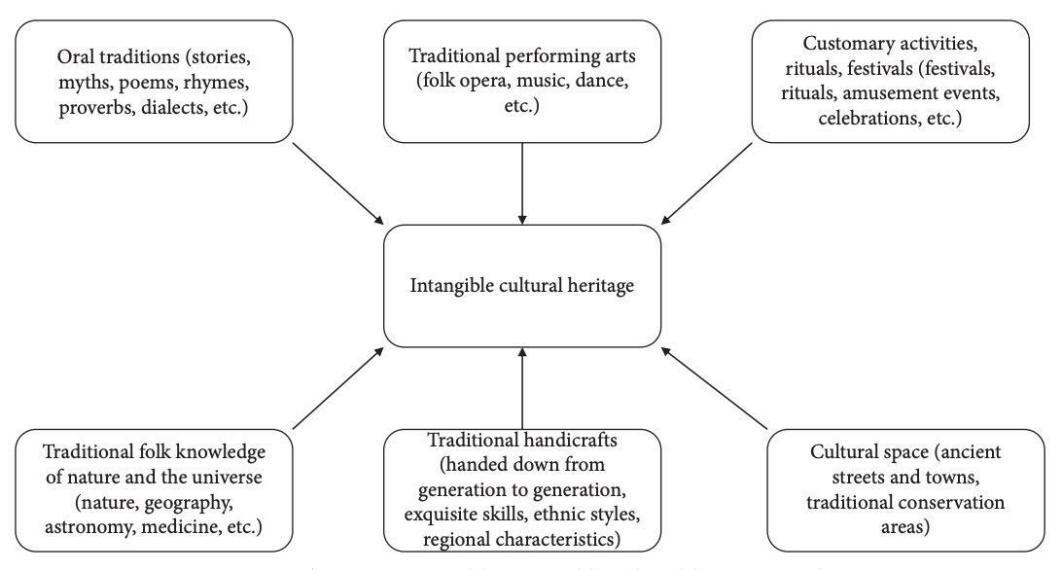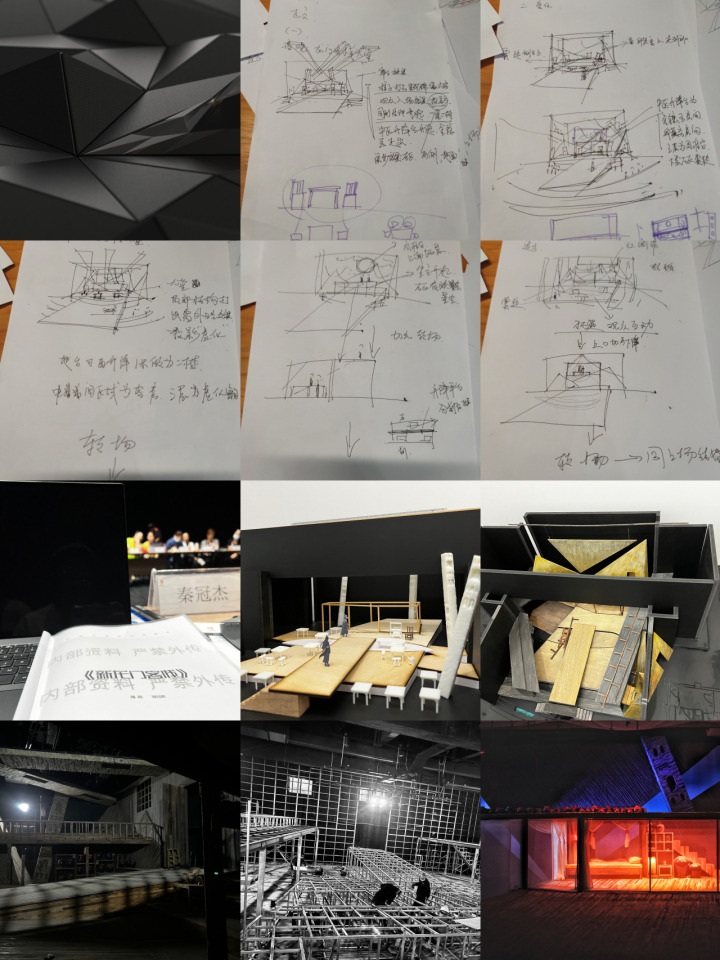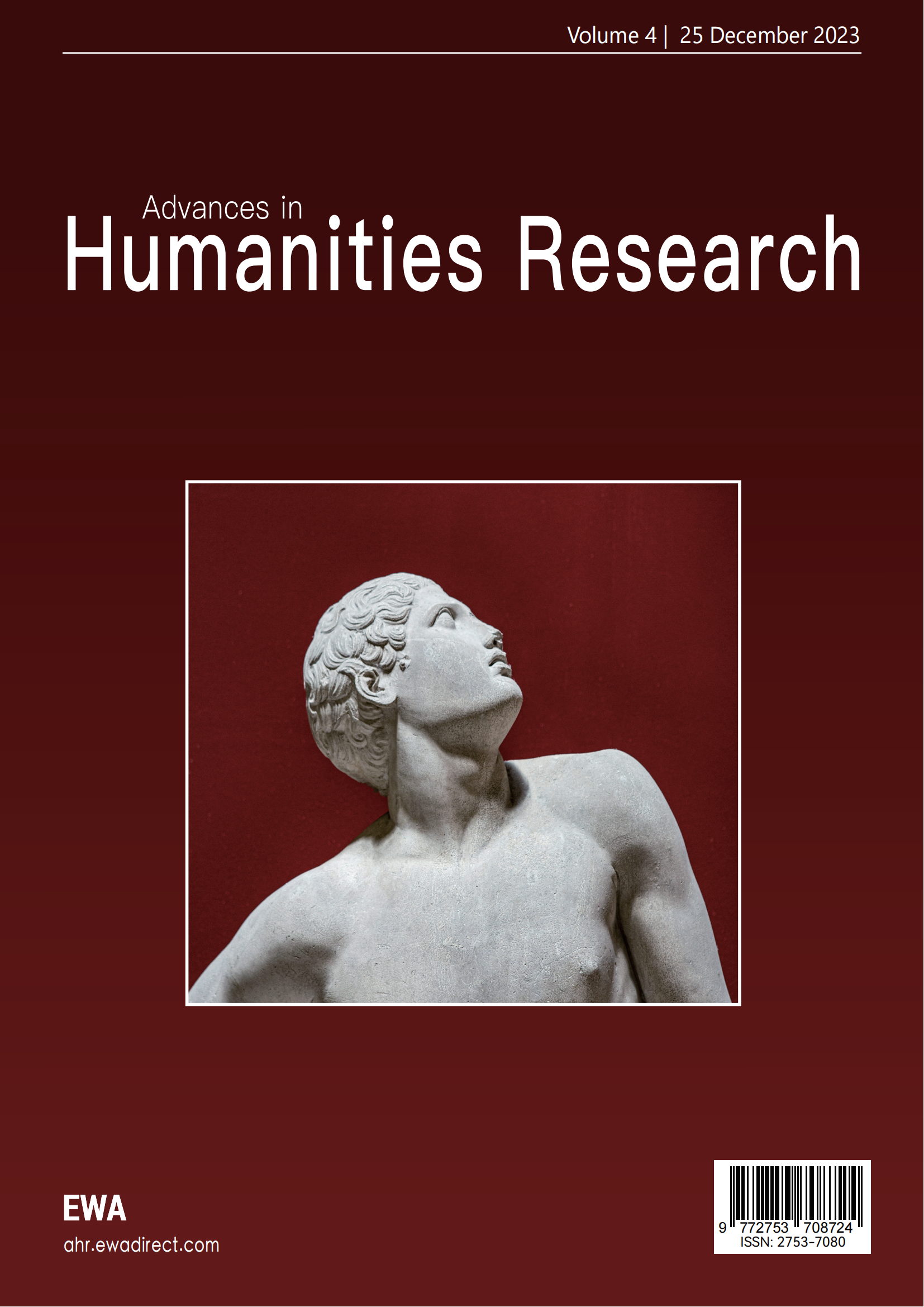1 Introduction.
In 1966, the People's Republic of China initiated a drive to eliminate the "Four Olds" and physically destroy any remains of bourgeois, counter-revolutionary ideology and material possessions during the Great Proletarian Cultural Revolution [1]. The "Cultural Revolution"--- resulted in the widespread demolition of numerous religious and heritage sites across the country. The Cultural Revolution is a significant and distinctive turning point in the 150-year progression of Chinese cultural development from tradition to modernity [2].
Now, China initiated the observance of "Cultural Heritage Day" in 2006 [3], commemorating more than two decades of adopting a completely distinct strategy towards cultural heritage. Heritage protection in China now is an essential endeavour that aims to protect and preserve invaluable cultural heritage in the history of human society.
Cultural heritage is intricately woven into the fabric of people's daily routines, social connections, and spiritual sense of self, resulting from the combined influence of society and individuals. Especially the conservation of intangible cultural heritages requires a focus on the active participation of inheritors and communities, with an emphasis on the transmission of oral traditions and practical skills.
Given the forces of globalisation and industrialization, cultural heritage is facing unprecedented challenges and risks. And the process of modernization prompts an inquiry into the delineation of an acceptable threshold for modifications to the essence of heritage, as natural evolution does not inherently equate to deliberate alteration [4]. Traditional folk culture and diverse cultural expressions coexist within the same social milieu, leading to inevitable encounters and interactions such as competition, collision, exchange, and integration. In order for a culture to survive and thrive within this arena, it must possess inherent value, adaptability and sustainability.
2 Definitions.
Through comprehensive investigations into the difficulties linked to preserving ICH, and augmenting the research with specific case studies, it becomes feasible to extract practical strategies and techniques for safeguarding ICH, thereby providing valuable guidance for practical application.
In this essay, the application of sustainable development theory will provide a structure for assessing the capacity of ICH preservation initiatives to attain sustainable development across social, environmental, and economic aspects. which gives rise to a subsequent debatable subject: the modernization of ICH within this fast-changing societies. The term "modernization of ICH" denotes the process of rendering ICH economically feasible by accommodating its inherent need for self-sustained development and meeting the external demands of present-day society.
Examining the difficulties faced in safeguarding ICH can provide a deep comprehension of the fundamental nature and qualities of cultural heritage conservation. The maintenance of intangible heritage symbols and manifestations is challenging due to their authenticity, wholeness, and transmission characteristics. In light of the rapid modernization occurring in the contemporary world, it is imperative to examine the extent to which ICH can attain sustainability.
3 Findings and Discussion.
3.1 Current Status of Intangible Cultural Heritage (ICH) in China
UNESCO defines Intangible Cultural Heritage (ICH) as a broad range of traditional cultural expressions that are passed down from one generation to another and protected, nurtured, and inherited by specific communities or groups. These expressions are manifest in diverse forms including oral traditions, performing arts, social customs, knowledge, abilities, and ancient rites linked to nature and the universe [5]. ICH functions as a manifestation of a nation or community's unique cultural character and also possesses considerable historical, social, and economic value.

Figure 1. The scope covered by ICH in China. [6]
Currently, China has a significant representation on the World Heritage List, with a total of 57 properties officially registered [7]. Yet, as of 2015, China has a mere 38 items that have been officially included on UNESCO's Representative List of the Intangible Cultural Heritage of Humanity [8]. This data illustrates an inequality in the safeguarding and acknowledgment of intangible heritage. Regrettably, a significant number of these ICH, which require immediate protection, continue to be at risk of diminishing and vanishing due to different geographies and ethnic groups exhibit variances in the degree of protection. Numerous ICH are facing challenges due to socioeconomic changes, ageing population, and a decrease of interest among younger generations. These factors are making it increasingly challenging to preserve and protect this cultural heritage.

Figure 2. National ICH projects in China [9].
These statistics underscored the relative vulnerability of ICH. One such case is China's "Suzhou Embroidery" project, a distinctive embroidery technique with a rich history and exceptional technical heritage in the Suzhou region. Despite the government's emphasis on the splendour of Suxiu and its cultural importance as an ICH, the industry has faced significant obstacles and hurdles over the past two decades [10]. There are more than 8000 Suzhou embroidery practitioners,yet with only 7 national-level ICH inheritors [11]. Consequently, effective strategies based on practical issues are required to protect and preserve ICH such as Su embroidery.

Figure 3. Suzhou embroidery [12].
Examining data and instances exposes the worldwide vulnerability in protecting ICH, encompassing the erosion of cultural identity, expertise, and the impact of industrialization. Immediate actions are required to enhance the protection and maintenance of intangible cultural assets, guaranteeing the long-lasting preservation of these valuable and distinctive cultural inheritances. Hence, a pertinent question arises: To what degree has China successfully safeguarded its intangible cultural heritage amidst rapid modernization?
3.2 Practices and Issues of ICH preservation in 21st Century China
In the decade following the implementation of the Intangible Cultural Heritage (ICH) protection project, academic research on ICH projects has largely focused on scholarly discussions within cultural ontology and critical analysis. However, there has been limited emphasis on proposing comprehensive and feasible protection plans that address the specific needs of these projects. Consequently, a situation has occurred where there are fervent calls for protection but yet practitioners found themselves helplessness in the face of destructive practices.
This was inevitable due to the historical stage and socio-economic environment a decade ago. In current society, China has implemented a series of measures to preserve ICH, including laws such as The ICH Law, acts of Intellectual Property Rights (IPRs), and the Contract Law [13]. A significant milestone in this regard was the enactment of the Cultural Relics Protection Law of the People's Republic of China by the 25th Session of the Standing Committee of the Fifth National People's Congress in 1982. This law plays a crucial role in safeguarding cultural heritage [14].
In addition, China has implemented a comprehensive system that spans from the national to local level. This system includes specialised agencies and supporting organisations that are dedicated to the conservation of ICH. In 2004, China's endorsement of UNESCO's Convention was a notable advancement in the protection of ICH. The establishment of the Office of Ministry Level Joint Conference in 2005 demonstrated China's dedication to safeguarding and advancing ICH. This office had a crucial role in creating extensive rules and policies focused on the advancement of Chinese intangible cultural treasures [15].
Yet, the conservation of ICH in China still encounters a variety of controversy. In the context of rapid urbanisation, modernization and industrialization, ICH faces various challenges including the loss of its originality caused by excessive commercialization; the decreasing number of individuals inheriting ICH across generations; and the waning prevalence of traditional communication methods [16]. Then, the prevalence of a profit-oriented society and swift transformations in public life pose formidable obstacles to the sustainability, safeguarding, and transmission of ICH [17]. Nevertheless, it is as important to acknowledge that certain forms of ICH possess commodifiable characteristics, and their evolution is intricately intertwined with the social and economic aspects of society.
For instance, the China Tourism Academy "National Cultural Consumption Data Report for the First Half of 2022" indicates that cultural product shopping constituted 55% of China's cultural consumption outlays [18]. According to Sun Yanling, the representative inheritor of Manchu embroidery, a national-level ICH: "If ICH is to survive and develop, particularly those that rely on craftsmanship like us, government support alone is insufficient. ICH must be commercialised and oriented towards consumers while retaining its core essence to ensure better inheritance and development" [19].
Conservation is not an impartial process of discerning some sort of intrinsic value. Rather, it is a creative process of valorizing a given resource or element [20]. The underlying objective of safeguarding ICH is to secure its vitality and intrinsic value, thereby facilitating its promotion, inheritance, and revitalization. In the book "Principles of Folklore," Mr. Wu Bing'an highlights the significance of deeply exploring the groups responsible for carrying and representing ICH inheritance within the context of the intersecting, interpenetrating, conflicting, and grafting relationship between traditional ICH and modern industrial culture. This exploration holds crucial cultural and historical value, as well as the potential to create a novel form of intangible culture with future applicability [21]. The question hence arises as to whether ICH should conform to market demands and modernised to enhance sustainability?
3.3 Research Theory: Sustainable Development Theory
The Industrial Revolution, characterised by exponential population growth, escalated production levels, engendered a series of severe pollution incidents that engendered a critical hazard to human existence. In light of the circumstances, humanity endeavoured to navigate an alternative trajectory for long-term sustenance and advancement, culminating in the ascendancy of sustainable development as an indispensable strategy for effectuating comprehensive socio-economic transformation on a global scale [22]. This theory asserts the significance of satisfying current needs without compromising the ability of future generations to meet their own needs [23].
At present, the United Nations General Assembly (UNGA) adopted the Resolution on Culture and Sustainable Development on 14 December 2015 [24]. The Resolution emphasises the importance of culture in facilitating sustainable development and acknowledges the significant influence of culture in promoting sustainable development.
The purpose of this chapter is to clarify the fundamental concepts of sustainable development and delineate their interconnectedness with ICH. Through the analysis of the societal, environmental, and economic impacts of preserving ICH, along with the long-term feasibility of conservation initiatives, to acquire a more profound comprehension of their capacity for sustainable development.
Preserving ICH enhances community identity and social cohesion, while also generating employment opportunities and stimulating economic development. The recreation of ICH serves as a responsive measure to the historical and social metamorphosis experienced by communities and groups, fostering a profound association with their cultural identity, authenticity, and indissoluble link to human rights [25]. Nevertheless, the practical implementation of conservation measures encounters obstacles such as conflicts between social identity and modern values, insufficient community participation, and a scarcity of qualified inheritors. Consequently, conservation strategies ought to prioritise community engagement, taking into account the requirements and perspectives of local communities throughout the development and implementation process.
Environmental sustainability is also a crucial consideration in ICH protection. Certain manifestations of ICH are inextricably linked to specific natural habitats, hence requiring a delicate equilibrium between the preservation of cultural heritage and the ecosystem. People who challenge the notion of an inherent conflict between heritage preservation and sustainability argue against the inevitability of such conflicts [26]. In contrast, alternative viewpoints from experts underscore the common goal of efficiently managing finite environmental resources, thereby bridging the preservation and sustainability movements [27].
In addition, safeguarding ICH generates possibilities for the growth and advancement of the local economy. Heritage preservation initiatives have the effect of stimulating tourism, drawing in visitors, and generating employment opportunities [28]. By conducting a thorough examination of the commercial aspects of ICH and acknowledging its inherent requirements for self-consistent evolution, as well as the external demands of contemporary society, we can effectively address and promote its rational commercialization. However, the process of protection may encounter economic obstacles, such as insufficient funding and fluctuating market demand. The viability of adaptive reuse initiatives is heavily dependent on crucial elements such as effective collaboration between the private and public sectors.
The sustainable development theory provides a comprehensive framework for examining the social, environmental, and economic dimensions of safeguarding ICH. To achieve sustainable development in the preservation of ICH, it is necessary to find a suitable equilibrium among these three aspects. This will promote community development and guarantee the enduring existence of these significant cultural manifestations.
3.4 Case study 01: Creative Adaption of New “Dragon Inn”
The Zhejiang Xiaobaihua Yue Opera Troupe has recently garnered considerable recognition and sparked tremendous interest on Chinese social media platforms. The troupe's innovative adaptation of combining traditional Yue opera with the movie "Dragon Inn" has attracted the younger generation, leading to consistently sold-out since its debut in March 2023.
"Typically, we offer tickets available one month prior to the event, and the performances scheduled for August are completely sold out by July." The project manager reported that some performances were sold out within one minute of being available online. Additionally, the TikTok hashtag for "Yue Opera New Dragon Inn" has attained an impressive 11.793 million likes and views [29]. In comparison, Tonglu county introduced a novel artistic endeavor by merging Yue opera with modern narratives in 2019, have garnered a relatively modest viewership, accumulating less than thousands of views.

Figure 4. Stage photo of the New dragon Inn [30].
Yue opera, which is one of the major theatrical genres in China, originated in Shengzhou in 1906 [31]. In its early stages, Yue opera featured exclusively male performers. However, after its development in Shanghai, the female troupe gained immense popularity, leading to the evolution of Yue opera into a genre where all roles are portrayed by female actors, known as "nüzi Yue opera (女子越剧)." The most significant characteristic of Yue opera is not its repertoire, but rather the various vocal styles (声腔), which is why it is also referred to as a vocal opera genre (声腔剧种). The significance of heritage preservation emphasised on its core principles: authenticity, materiality, and monumentality as well as its historical, artistic, and scientific values [32]. Which the commendable achievement of New Dragon Inn can be attributed to their adept incorporation of modernised interpretation, while preserving the vocal melodies and linguistic expressions in Yue opera showcase the unique emotions and styles of the local people [33]. The young playwright of the New Dragon Inn remarked the design of the vocal style, “Upon hearing it, one can immediately discern that it belongs to this particular Yue opera genre, yet it should not be confined within the boundaries of a specific genre.” [34].
The troupe also captivates the audience with visually stunning and exhilarating performances, achieved through innovative stage designs, sophisticated costumes, and outstanding performing skills. Moreover, XiaoBaiHua Yue Opera adopted a prevalent environmental performance approach to provide the audience with an immersive experience. This approach deviates from traditional modes of passive audience interaction, fostering instead an active engagement that situates the audience in both a participatory and exploratory capacity within the theatrical space. This novel approach not only enhances the overall theatrical experience but also drives the continued evolution of Yue Opera.

Figure 5. The stage design of the New Dragon Inn [35].
The remarkable rise of "New Dragon Inn" to a level of widespread popularity can be attributed to the relentless endeavours undertaken by the Zhejiang Xiaobaihua Yue Opera Troupe over the span of three decades. Their dedicated pursuit of a "younger and modernised" approach to Yue Opera has been instrumental in the troupe's success. It is through establishing a sustainable groundwork for cultural development and pursuing consistent evolution in alignment with contemporary circumstances that the modern transformation and sustainable growth of traditional culture can be achieved.
3.5 Case study 02: Tonglu Yue Opera Going Modernised
Ma Shengde, Intangible Cultural Heritage Inspector of the Ministry of Culture and Tourism, said: " The core of intangible cultural heritage (ICH) inheritance resides within humanity itself. It is through the living that heritage is passed down from generation to generation, enabling it to endure for centuries, continually perpetuating its vitality." [36]. Effectively incorporating ICH into the daily lives of a broader populace stands as a crucial concern, as it holds the key to revitalising the inherent vigour of ICH.
In today’s modernised society, a great many individuals advocate for innovation in the vocal style and musical instruments of Yue opera, suggesting a departure from traditional melodies and vocal techniques. The aforementioned example, Tonglu, is the hometown of 5 Plum Performance Award winners, which is the highest award for Chinese opera performing arts. In 2019, Tonglu introduced a novel artistic endeavor by merging Yue opera with modern narratives to depict the entrepreneurial odyssey of Tonglu's express delivery enterprises.

Figure 6. The stage photo of the Tonglu Yue opera. [37].
"The actors wear modern costumes and incorporate innovative new vocal style and performance techniques." said Sun Junfei, the secretary of Tonglu County Yue Opera Training Center [38]. However, the incorporation of a significant number of Western elements into Yue opera, which is rooted in traditional Eastern art, leads to a sense of discordance and an inability to achieve seamless integration due to cultural differences. As a result, an excessive amalgamation of cultural elements creates a state of confusion within the art form. Hence, in order to achieve innovation in vocal opera genre, it is necessary to build upon the foundation of traditional vocal techniques. Therefore, despite the innovative intentions behind this initiative, it failed to generate significant discussion and garnered less than a thousand views on chinese online video website.
Indeed, while there can be certain advantages associated with the modernization of ICH, such as the modernization of the ICH holds the potential for expanding its reach and garnering increased recognition, resulting in economic advantages and the strengthening of communal identities that can foster social sustainability. However, it is equally important to acknowledge that this process may not always lead to an improvement in its long-term sustainability, inadequate and inappropriate modernization poses the risk of diluting or commodifying ICH, thereby jeopardizing its cultural sustainability, because “the transmission and dissemination of ICH necessitates the preservation of its historical originality and respectful adherence to its past form.” Consequently, “any deviations or distortions from its historical original are considered detrimental to the integrity of ICH.” [39].
The integration of Yue opera with express delivery, fails to effectively combine tradition with modernity, moreover, the modification of the traditional Yue opera vocal style results in the loss of the inherent essence that Yue opera should possess. Various factors such as the potential dilution of cultural uniqueness, the risk of cultural homogenization, and the challenges of balancing tradition and innovation can impact the overall sustainability of ICH. The sustainability of ICH requires distinct approaches and methods due to its authenticity, wholeness, and transmission qualities. Therefore, careful consideration and thoughtful approaches are necessary to ensure that modernization efforts effectively preserve and promote the long-term viability of ICH practices.
4 Conclusion.
The preservation of ICH requires distinct approaches and methods due to its authenticity, wholeness, and transmission characteristics. China has enacted legislative measures and established a comprehensive framework for safeguarding ICH, but it still faces challenges such as incomplete legal frameworks. The sustainable development theory offers a framework for evaluating the potential of ICH protection programs. This theory emphasises the importance of balancing economic, social, and environmental considerations in development initiatives.
The preservation of ICH in China faces challenges such as socioeconomic changes and declining interest among younger generations. Effective strategies and policies are crucial for the preservation of ICH to enhance its sustainability. The case study of the XiaoBaiHua Yue Opera Troupe demonstrates the positive impact of innovative approaches to promote and preserve ICH. The empirical evidence also substantiates the proposition that aligning with market demands yields advantages for the advancement of ICH. Transformations in aesthetics, shifts in market preferences, among other factors, collectively contribute to the ultimate evolution of ICH. Notwithstanding the progress made in modernising ICH, certain cases, such as the Tonglu Yue Opera, remain unsuccessful in the contemporary market. It is evidenthe primary objective lies in the modernization of ICH in a manner that upholds and safeguards its intrinsic essence.
Within the context of contemporary globalisation, the safeguarding of intangible cultural heritage (ICH) has emerged as a central concern on the global stage. A thorough comprehension of the challenges and complexities inherent in preserving ICH is imperative for the development of more effective strategies and policies. Through engaging in comprehensive dialogues and undertaking comparative analyses, a profound comprehension of the current status and pertinent challenges surrounding ICH protection can be attained. This comprehension establishes a fundamental basis for the advancement of enhanced preservation and safeguarding measures aimed at enhancing the sustainability of ICH.
References
[1]. Blumenfield, T., & Silverman, H. (2013, May 14). Cultural Heritage Politics in China. Springer Science & Business Media.
[2]. Liu Qingfeng. (1996, January 1). The Cultural Revolution: Historical Facts and Research. Chinese University Press. 劉青峰, 文化大革命: 史實與研究.
[3]. Xinhua News Agency (2006, May) China Establishes Annual ’Cultural Heritage Day’ -- china.org.cn. (n.d.). http://www.china.org.cn/english/2006/May/169470.htm.
[4]. Ubertazzi, B. (2022, August 4). Intangible Cultural Heritage, Sustainable Development and Intellectual Property. Springer Nature.
[5]. UNESCO - What is Intangible Cultural Heritage? (n.d.). https://ich.unesco.org/en/what-is-intangible-heritage-00003.
[6]. Xiao, L. (2022, August 9). Intangible Cultural Heritage Reproduction and Revitalization: Value Feedback, Practice, and Exploration Based on the IPA Model. Computational Intelligence and Neuroscience, 2022, 1–13. https://doi.org/10.1155/2022/8411999.
[7]. China - UNESCO World Heritage Convention. (n.d.). https://whc.unesco.org/en/statesparties/cn.
[8]. China Intangible Cultural Heritage. (n.d.). China-ich. https://www.culturalheritagechina.org/.
[9]. Xiao, L. (2022, August 9). Intangible Cultural Heritage Reproduction and Revitalization: Value Feedback, Practice, and Exploration Based on the IPA Model. Computational Intelligence and Neuroscience, 2022, 1–13. https://doi.org/10.1155/2022/8411999.
[10]. Zhou, Y., & Liu, J. (2023, August 17). The Predicament of Suzhou Embroidery: Implications of Intangible Cultural Heritage in China. TEXTILE, 1–18. https://doi.org/10.1080/14759756.2023.2228024.
[11]. (n.d.). National intangible cultural heritage items and representative inheritors - Han embroidery.国家级非遗项目及代表性传承人——汉族刺绣篇. https://zhuanlan.zhihu.com/p/444513354.
[12]. Lin, Q., & Lian, Z. (2018, November 23). On Protection of Intangible Cultural Heritage in China from the Intellectual Property Rights Perspective. Sustainability, 10(12), 4369. https://doi.org/10.3390/su10124369.
[13]. Law of the People’s Republic of China on the Protection of Cultural Relics -- china.org.cn. (n.d.). http://www.china.org.cn/english/environment/34304.htm.
[14]. China Intangible Cultural Heritage. (n.d.). China-ich. https://www.culturalheritagechina.org/.
[15]. Zhang, T., Yang, Y., Fan, X., & Ou, S. (2023, September 8). Corridors Construction and Development Strategies for Intangible Cultural Heritage: A Study about the Yangtze River Economic Belt. Sustainability, 15(18), 13449. https://doi.org/10.3390/su151813449.
[16]. Cohen, E. (2002, August). Authenticity, Equity and Sustainability in Tourism. Journal of Sustainable Tourism, 10(4), 267–276. https://doi.org/10.1080/09669580208667167
[17]. National Cultural Consumption Data Report for the First Half of 2022_China Tourism Academy. (n.d.). 2022年上半年全国文化消费数据报告_中国旅游研究院. (n.d.). https://www.ctaweb.org.cn/cta/gzdt/202208/a07f12fc72b4466483a5302dbfb82495.shtml
[18]. Xinhua News Agency (2006, May) China Establishes Annual ’Cultural Heritage Day’ -- china.org.cn. (n.d.). http://www.china.org.cn/english/2006/May/169470.htm.
[19]. Richmond, A., & Bracker, A. (2010, July 15). Conservation. Routledge.
[20]. Wu BingAn, 2014. "Principles of Folklore,"民俗学原理.
[21]. Shi, L., Han, L., Yang, F., & Gao, L. (2019, December 13). The Evolution of Sustainable Development Theory: Types, Goals, and Research Prospects. Sustainability, 11(24), 7158. https://doi.org/10.3390/su11247158
[22]. Development, W. C. O. E. A. (1987, January 1). Our Common Future. Oxford ; New York : Oxford University Press.
[23]. UNESCO, (2023, April 20). UN General Assembly adopts a new resolution on culture and sustainable development. (2023, April 20). https://www.unesco.org/en/articles/un-general-assembly-adopts-new-resolution-culture-and-sustainable-development.
[24]. Lenzerini, F. (2011, February 1). Intangible Cultural Heritage: The Living Culture of Peoples. European Journal of International Law, 22(1), 101–120. https://doi.org/10.1093/ejil/chr006.
[25]. Cooper, D.J.; Musschetto, V. (February 03, 2010) Reconciling Preservation and Sustainability.
[26]. Song, X., Cheong, K. C., Wang, Q., & Li, Y. (2020, May 3). Developmental Sustainability through Heritage Preservation: Two Chinese Case Studies. Sustainability, 12(9), 3705. https://doi.org/10.3390/su12093705
[27]. Lussetyowati, T. (2015, May). Preservation and Conservation through Cultural Heritage Tourism. Case Study: Musi Riverside Palembang. Procedia - Social and Behavioral Sciences, 184, 401–406. https://doi.org/10.1016/j.sbspro.2015.05.109
[28]. Lu, Y., Wang, Y (2023 August).With nearly 10 million viewers in one night, this Shaoxing opera became popular among young people. Why is "New Dragon Inn" so crowded with customers_Hangzhou Net. Retrieved from https://news.hangzhou.com.cn/zjnews/content /2023-08/10/content_8597762.htm
[29]. Ma Li (2023.April ) Characters|Mao Weitao's Restart and "New Dragon Inn" (Part 2) https://tidenews.com.cn/news.html?id=2449359
[30]. Ying Zhiliang (2015, January 1). History of Yue Opera. Social Sciences Literature Press. 应志良 (2015, January 1). 越剧史话. 社会科学文献出版社.
[31]. Kuah, K. E., & Liu, Z. (2016, November 3). Intangible Cultural Heritage in Contemporary China. Taylor & Francis.
[32]. Jiang Jin (2015, January 1). Poetry and Politics: Women's Yue Opera in Shanghai Public Culture in the 20th Century. Social Sciences Literature Press. 姜进 (2015, January 1). 诗与政治:20世纪上海公共文化中的女子越剧. 社会科学文献出版社.
[33]. Ma Shengde: The core of intangible cultural heritage protection is people, and intangible cultural heritage must enter modern life - Traditional Chinese Medicine Intangible Cultural Heritage Network· Traditional Chinese Medicine Intangible Cultural Heritage Digital Museum. (n.d.). http://www.ichtcm.com/zixun /mingjiashidian/1460.html
[34]. Shanghai Opear Troupe. (2019, September) Present a tribute to the 70th anniversary of the founding of New China | Tonglu Yue Opera Troupe's "Access to the World" at the National Yue Opera Gala. (n.d.). Copyright © 2017 Sohu.com Inc. All Rights Reserved. https://www.sohu.com/a/341910795_661769
[35]. Hong Huimin. 2018 Modern Yue Opera "Connecting the World" premiered in Tonglu today and express delivery practitioners are invited to watch it for free - Zhejiang News - Zhejiang Online. Retrieved from https://zjnews.zjol.com.cn/zjnews/hznews/201807/t20180710_7742040 .shtml
[36]. Jones, S. (2009, May). Experiencing Authenticity at Heritage Sites: Some Implications for Heritage Management and Conservation. Conservation and Management of Archaeological Sites, 11(2), 133–147. https://doi.org/10.1179/175355210x12670102063661
Cite this article
Li,C. (2024). Does Modernization of Intangible Cultural Heritage (ICH) Enhance Sustainability in China. Advances in Humanities Research,4,80-91.
Data availability
The datasets used and/or analyzed during the current study will be available from the authors upon reasonable request.
Disclaimer/Publisher's Note
The statements, opinions and data contained in all publications are solely those of the individual author(s) and contributor(s) and not of EWA Publishing and/or the editor(s). EWA Publishing and/or the editor(s) disclaim responsibility for any injury to people or property resulting from any ideas, methods, instructions or products referred to in the content.
About volume
Journal:Advances in Humanities Research
© 2024 by the author(s). Licensee EWA Publishing, Oxford, UK. This article is an open access article distributed under the terms and
conditions of the Creative Commons Attribution (CC BY) license. Authors who
publish this series agree to the following terms:
1. Authors retain copyright and grant the series right of first publication with the work simultaneously licensed under a Creative Commons
Attribution License that allows others to share the work with an acknowledgment of the work's authorship and initial publication in this
series.
2. Authors are able to enter into separate, additional contractual arrangements for the non-exclusive distribution of the series's published
version of the work (e.g., post it to an institutional repository or publish it in a book), with an acknowledgment of its initial
publication in this series.
3. Authors are permitted and encouraged to post their work online (e.g., in institutional repositories or on their website) prior to and
during the submission process, as it can lead to productive exchanges, as well as earlier and greater citation of published work (See
Open access policy for details).
References
[1]. Blumenfield, T., & Silverman, H. (2013, May 14). Cultural Heritage Politics in China. Springer Science & Business Media.
[2]. Liu Qingfeng. (1996, January 1). The Cultural Revolution: Historical Facts and Research. Chinese University Press. 劉青峰, 文化大革命: 史實與研究.
[3]. Xinhua News Agency (2006, May) China Establishes Annual ’Cultural Heritage Day’ -- china.org.cn. (n.d.). http://www.china.org.cn/english/2006/May/169470.htm.
[4]. Ubertazzi, B. (2022, August 4). Intangible Cultural Heritage, Sustainable Development and Intellectual Property. Springer Nature.
[5]. UNESCO - What is Intangible Cultural Heritage? (n.d.). https://ich.unesco.org/en/what-is-intangible-heritage-00003.
[6]. Xiao, L. (2022, August 9). Intangible Cultural Heritage Reproduction and Revitalization: Value Feedback, Practice, and Exploration Based on the IPA Model. Computational Intelligence and Neuroscience, 2022, 1–13. https://doi.org/10.1155/2022/8411999.
[7]. China - UNESCO World Heritage Convention. (n.d.). https://whc.unesco.org/en/statesparties/cn.
[8]. China Intangible Cultural Heritage. (n.d.). China-ich. https://www.culturalheritagechina.org/.
[9]. Xiao, L. (2022, August 9). Intangible Cultural Heritage Reproduction and Revitalization: Value Feedback, Practice, and Exploration Based on the IPA Model. Computational Intelligence and Neuroscience, 2022, 1–13. https://doi.org/10.1155/2022/8411999.
[10]. Zhou, Y., & Liu, J. (2023, August 17). The Predicament of Suzhou Embroidery: Implications of Intangible Cultural Heritage in China. TEXTILE, 1–18. https://doi.org/10.1080/14759756.2023.2228024.
[11]. (n.d.). National intangible cultural heritage items and representative inheritors - Han embroidery.国家级非遗项目及代表性传承人——汉族刺绣篇. https://zhuanlan.zhihu.com/p/444513354.
[12]. Lin, Q., & Lian, Z. (2018, November 23). On Protection of Intangible Cultural Heritage in China from the Intellectual Property Rights Perspective. Sustainability, 10(12), 4369. https://doi.org/10.3390/su10124369.
[13]. Law of the People’s Republic of China on the Protection of Cultural Relics -- china.org.cn. (n.d.). http://www.china.org.cn/english/environment/34304.htm.
[14]. China Intangible Cultural Heritage. (n.d.). China-ich. https://www.culturalheritagechina.org/.
[15]. Zhang, T., Yang, Y., Fan, X., & Ou, S. (2023, September 8). Corridors Construction and Development Strategies for Intangible Cultural Heritage: A Study about the Yangtze River Economic Belt. Sustainability, 15(18), 13449. https://doi.org/10.3390/su151813449.
[16]. Cohen, E. (2002, August). Authenticity, Equity and Sustainability in Tourism. Journal of Sustainable Tourism, 10(4), 267–276. https://doi.org/10.1080/09669580208667167
[17]. National Cultural Consumption Data Report for the First Half of 2022_China Tourism Academy. (n.d.). 2022年上半年全国文化消费数据报告_中国旅游研究院. (n.d.). https://www.ctaweb.org.cn/cta/gzdt/202208/a07f12fc72b4466483a5302dbfb82495.shtml
[18]. Xinhua News Agency (2006, May) China Establishes Annual ’Cultural Heritage Day’ -- china.org.cn. (n.d.). http://www.china.org.cn/english/2006/May/169470.htm.
[19]. Richmond, A., & Bracker, A. (2010, July 15). Conservation. Routledge.
[20]. Wu BingAn, 2014. "Principles of Folklore,"民俗学原理.
[21]. Shi, L., Han, L., Yang, F., & Gao, L. (2019, December 13). The Evolution of Sustainable Development Theory: Types, Goals, and Research Prospects. Sustainability, 11(24), 7158. https://doi.org/10.3390/su11247158
[22]. Development, W. C. O. E. A. (1987, January 1). Our Common Future. Oxford ; New York : Oxford University Press.
[23]. UNESCO, (2023, April 20). UN General Assembly adopts a new resolution on culture and sustainable development. (2023, April 20). https://www.unesco.org/en/articles/un-general-assembly-adopts-new-resolution-culture-and-sustainable-development.
[24]. Lenzerini, F. (2011, February 1). Intangible Cultural Heritage: The Living Culture of Peoples. European Journal of International Law, 22(1), 101–120. https://doi.org/10.1093/ejil/chr006.
[25]. Cooper, D.J.; Musschetto, V. (February 03, 2010) Reconciling Preservation and Sustainability.
[26]. Song, X., Cheong, K. C., Wang, Q., & Li, Y. (2020, May 3). Developmental Sustainability through Heritage Preservation: Two Chinese Case Studies. Sustainability, 12(9), 3705. https://doi.org/10.3390/su12093705
[27]. Lussetyowati, T. (2015, May). Preservation and Conservation through Cultural Heritage Tourism. Case Study: Musi Riverside Palembang. Procedia - Social and Behavioral Sciences, 184, 401–406. https://doi.org/10.1016/j.sbspro.2015.05.109
[28]. Lu, Y., Wang, Y (2023 August).With nearly 10 million viewers in one night, this Shaoxing opera became popular among young people. Why is "New Dragon Inn" so crowded with customers_Hangzhou Net. Retrieved from https://news.hangzhou.com.cn/zjnews/content /2023-08/10/content_8597762.htm
[29]. Ma Li (2023.April ) Characters|Mao Weitao's Restart and "New Dragon Inn" (Part 2) https://tidenews.com.cn/news.html?id=2449359
[30]. Ying Zhiliang (2015, January 1). History of Yue Opera. Social Sciences Literature Press. 应志良 (2015, January 1). 越剧史话. 社会科学文献出版社.
[31]. Kuah, K. E., & Liu, Z. (2016, November 3). Intangible Cultural Heritage in Contemporary China. Taylor & Francis.
[32]. Jiang Jin (2015, January 1). Poetry and Politics: Women's Yue Opera in Shanghai Public Culture in the 20th Century. Social Sciences Literature Press. 姜进 (2015, January 1). 诗与政治:20世纪上海公共文化中的女子越剧. 社会科学文献出版社.
[33]. Ma Shengde: The core of intangible cultural heritage protection is people, and intangible cultural heritage must enter modern life - Traditional Chinese Medicine Intangible Cultural Heritage Network· Traditional Chinese Medicine Intangible Cultural Heritage Digital Museum. (n.d.). http://www.ichtcm.com/zixun /mingjiashidian/1460.html
[34]. Shanghai Opear Troupe. (2019, September) Present a tribute to the 70th anniversary of the founding of New China | Tonglu Yue Opera Troupe's "Access to the World" at the National Yue Opera Gala. (n.d.). Copyright © 2017 Sohu.com Inc. All Rights Reserved. https://www.sohu.com/a/341910795_661769
[35]. Hong Huimin. 2018 Modern Yue Opera "Connecting the World" premiered in Tonglu today and express delivery practitioners are invited to watch it for free - Zhejiang News - Zhejiang Online. Retrieved from https://zjnews.zjol.com.cn/zjnews/hznews/201807/t20180710_7742040 .shtml
[36]. Jones, S. (2009, May). Experiencing Authenticity at Heritage Sites: Some Implications for Heritage Management and Conservation. Conservation and Management of Archaeological Sites, 11(2), 133–147. https://doi.org/10.1179/175355210x12670102063661









